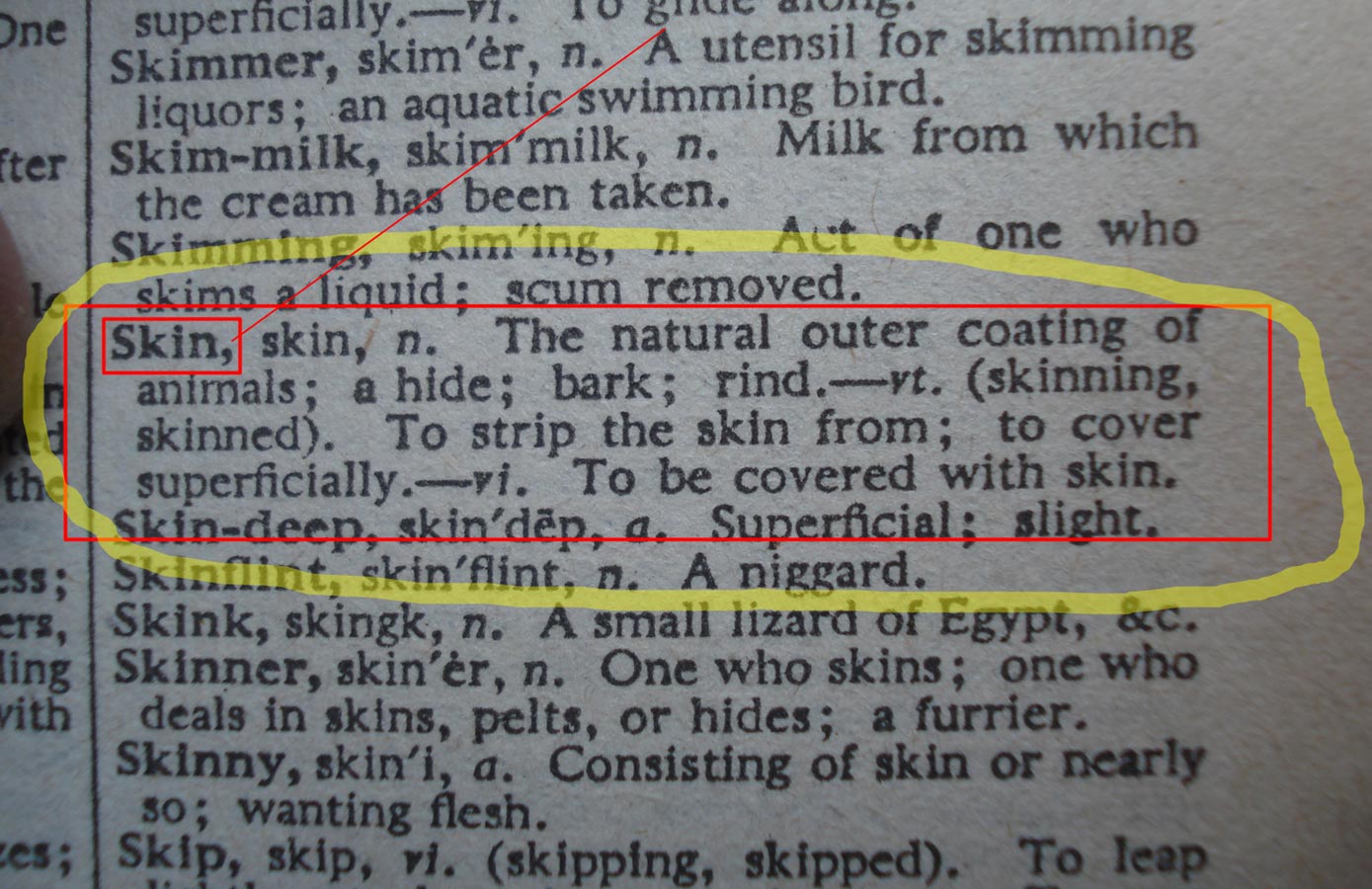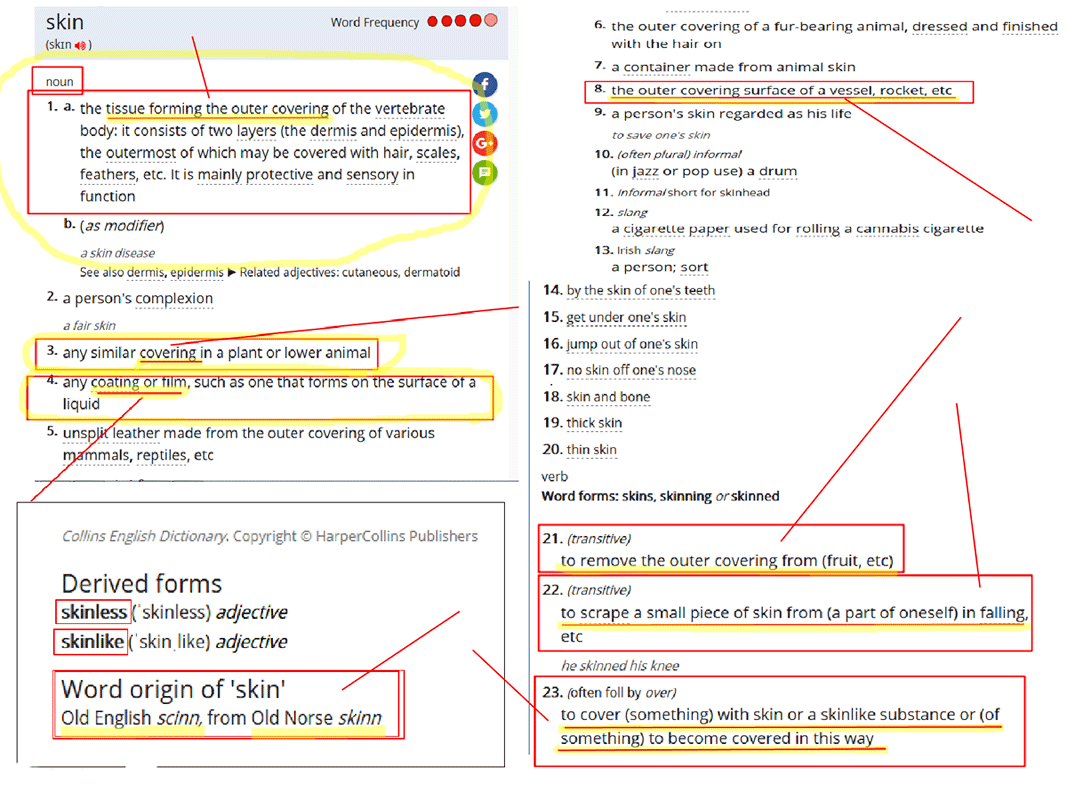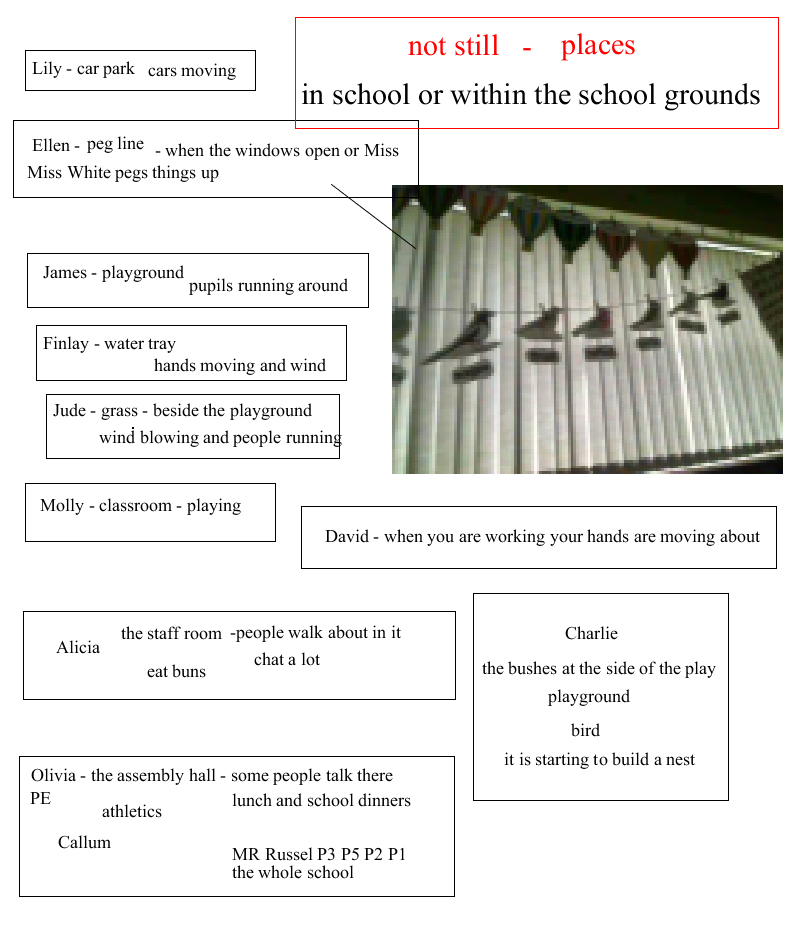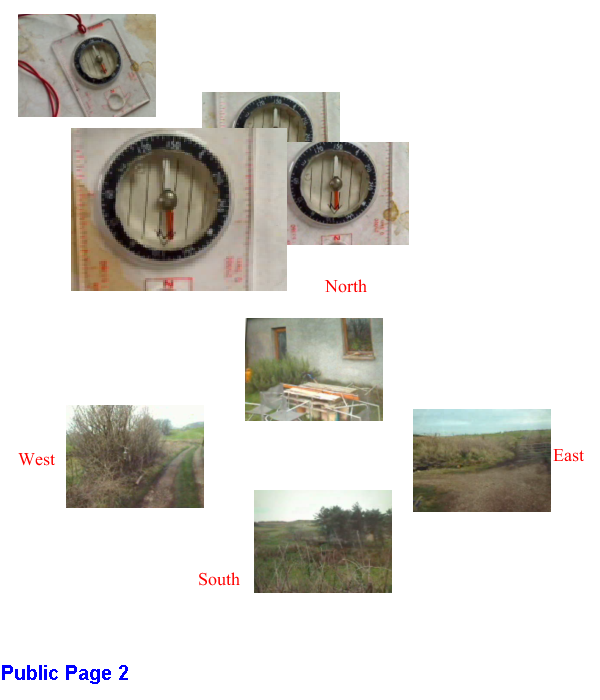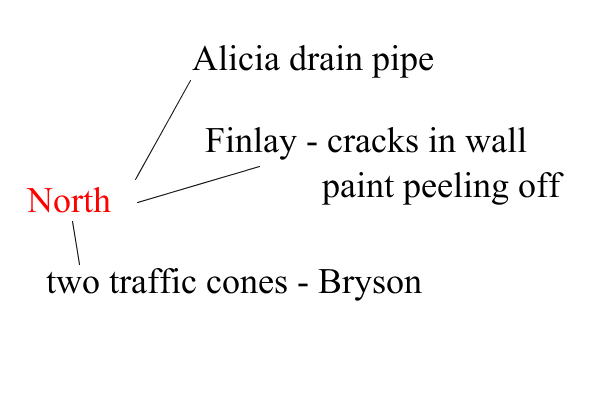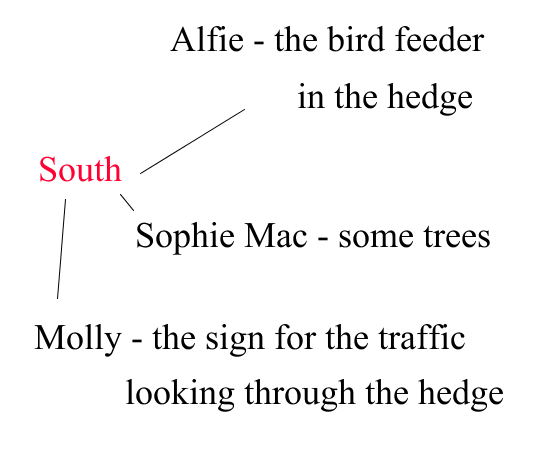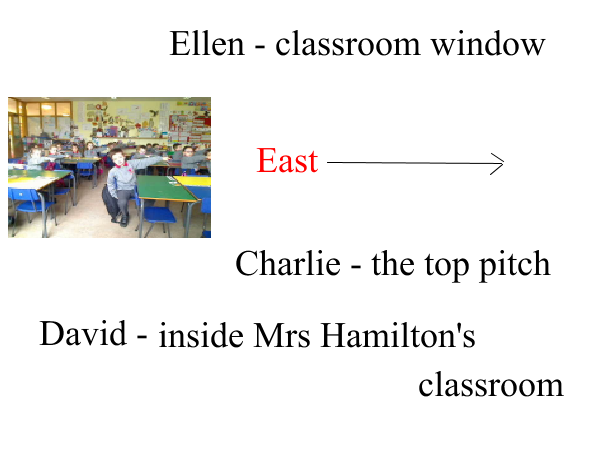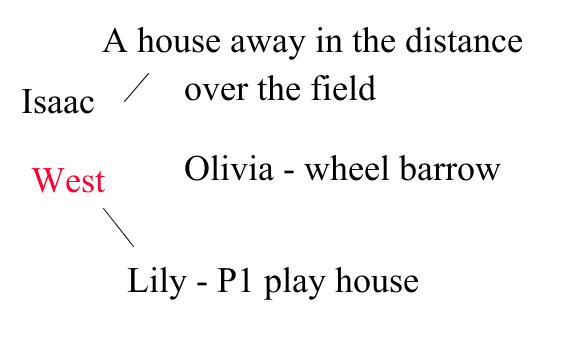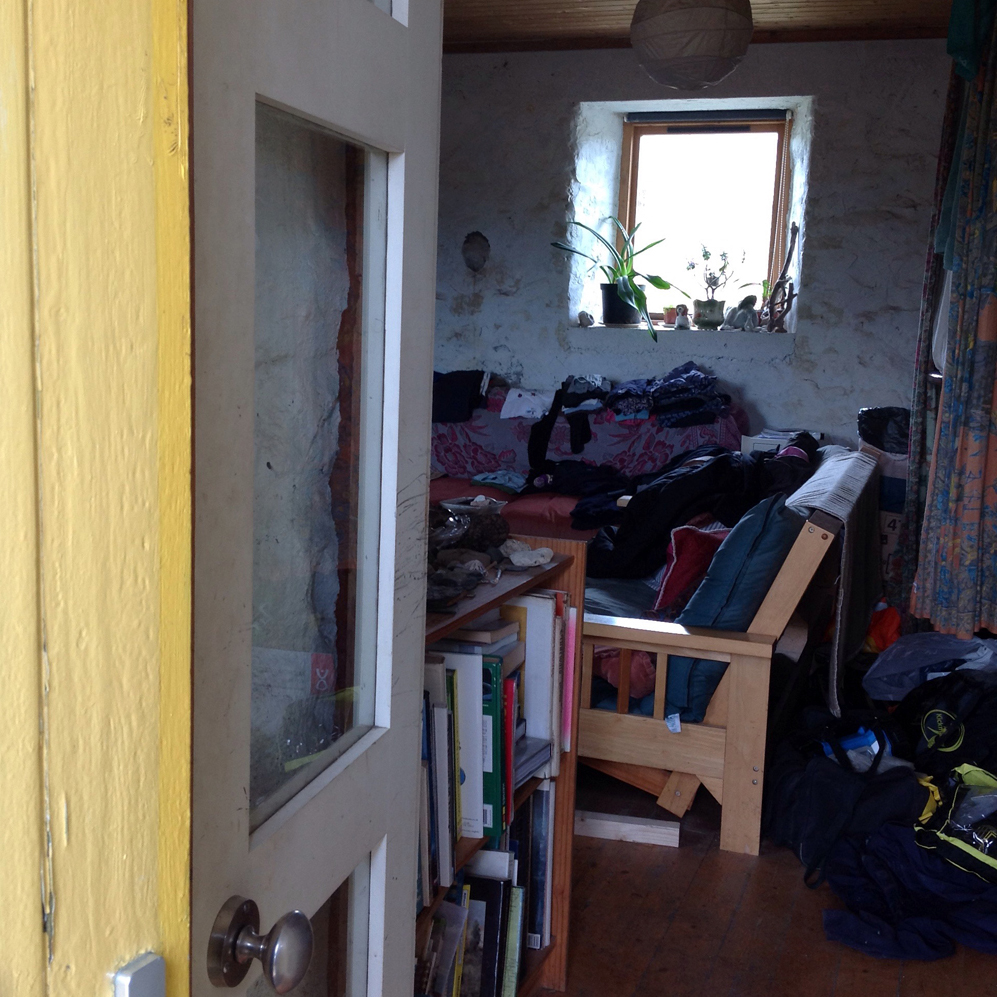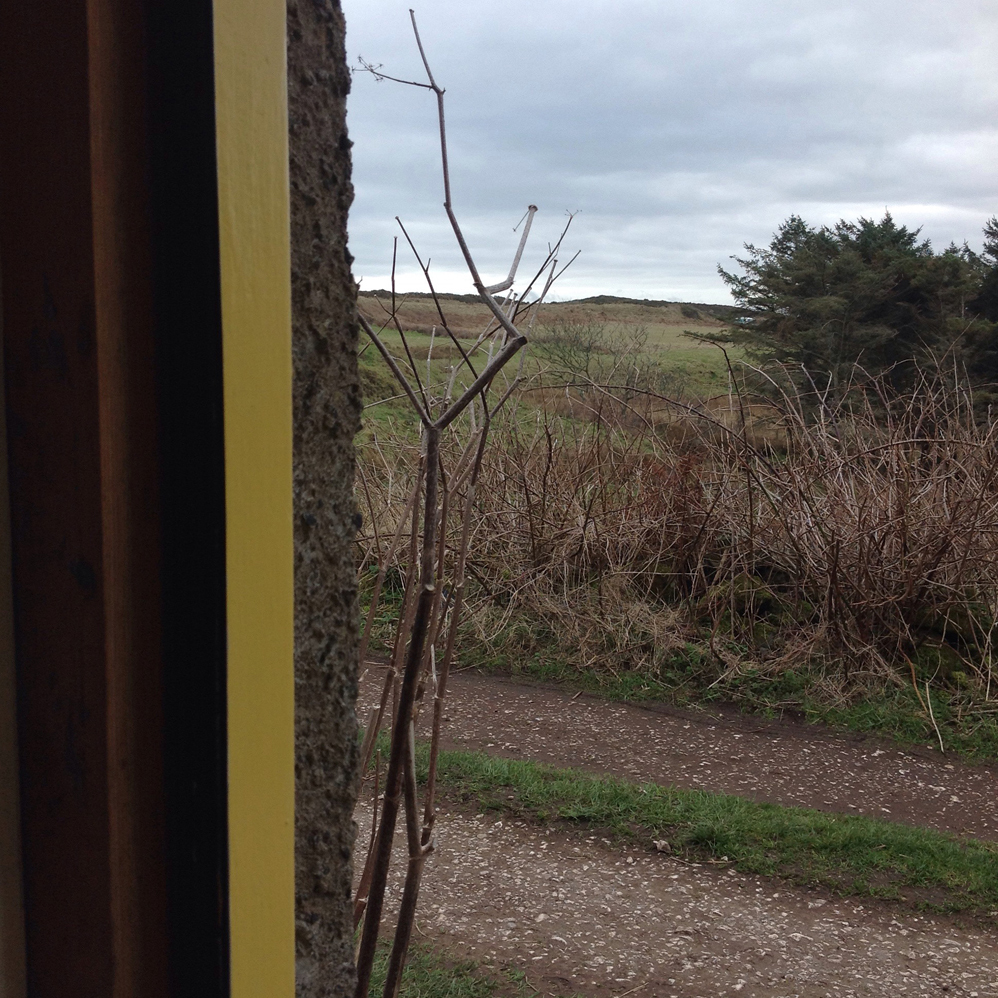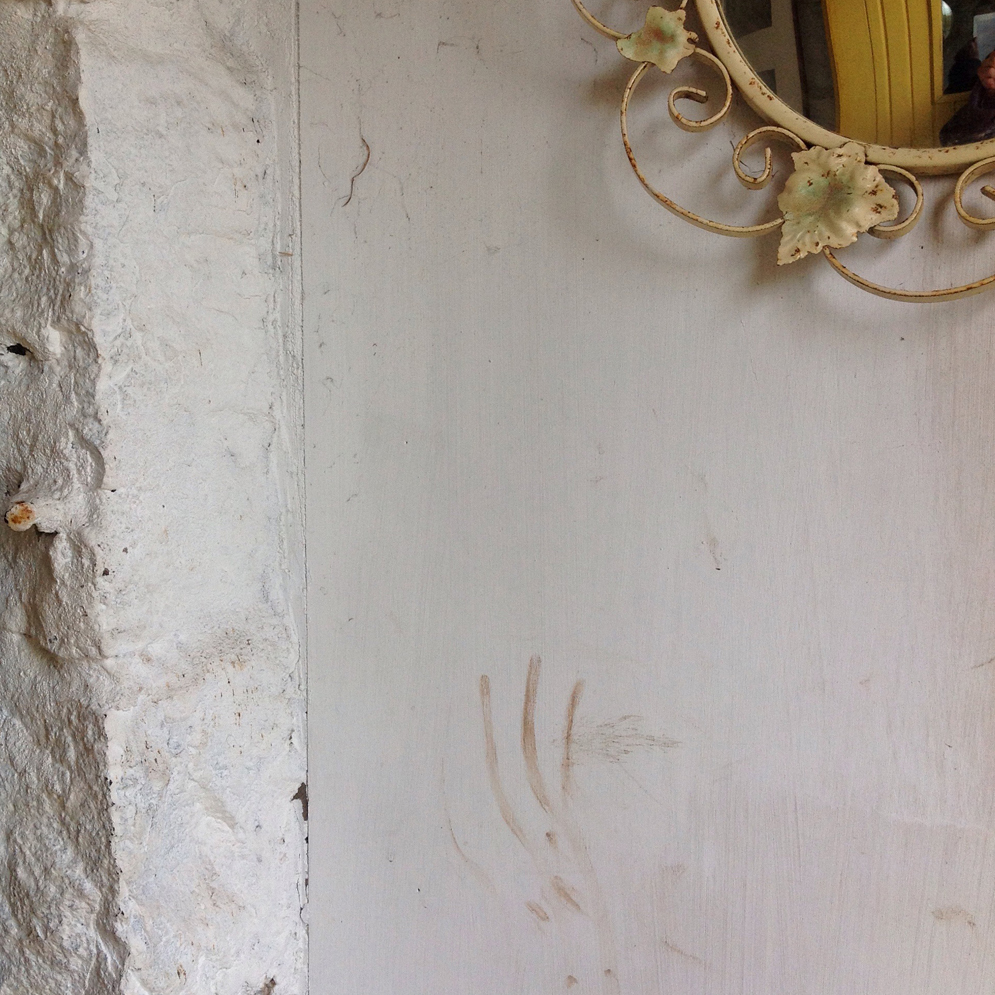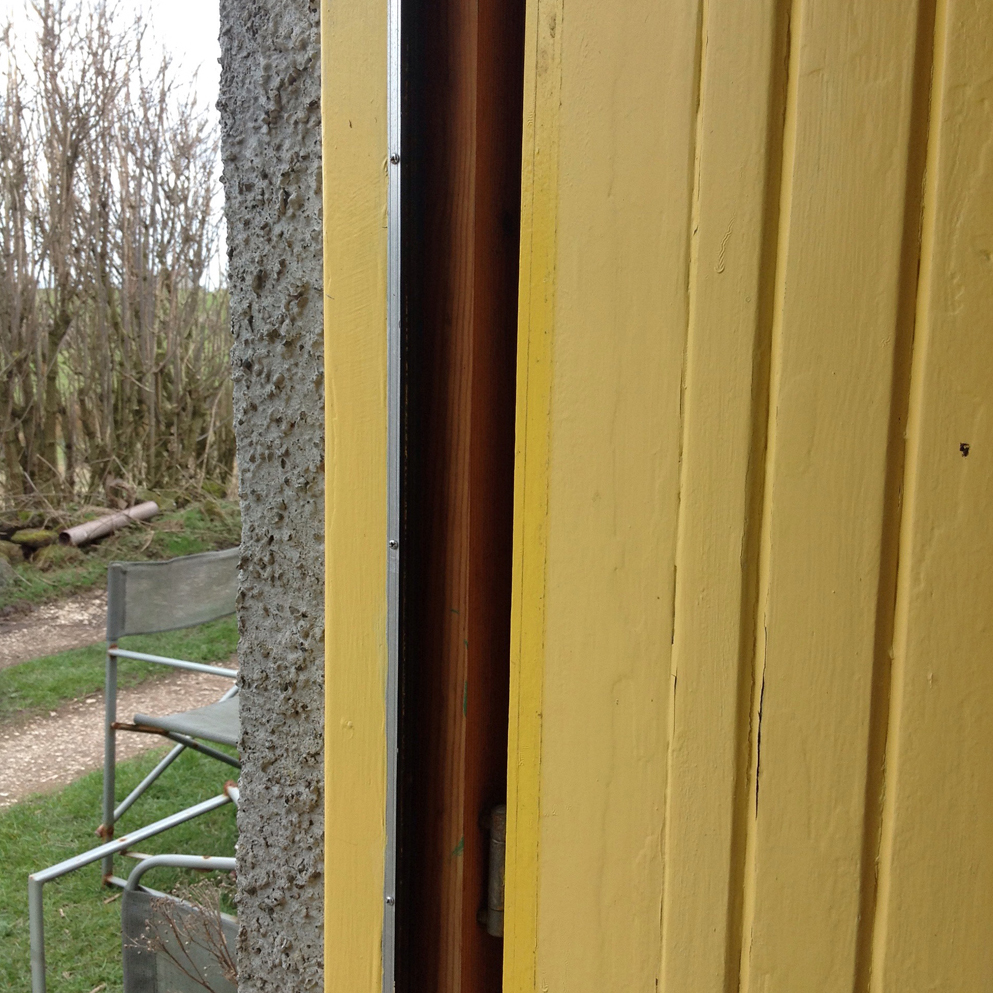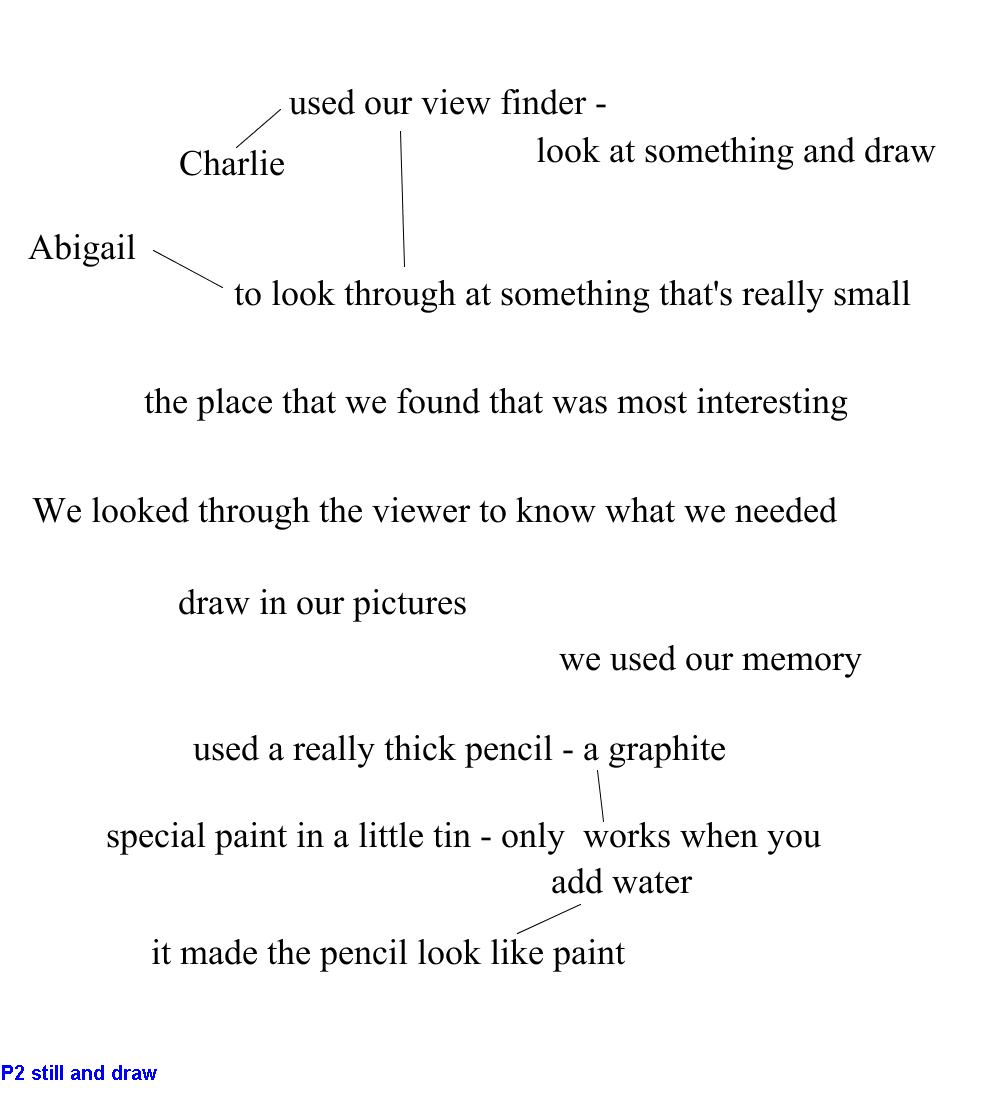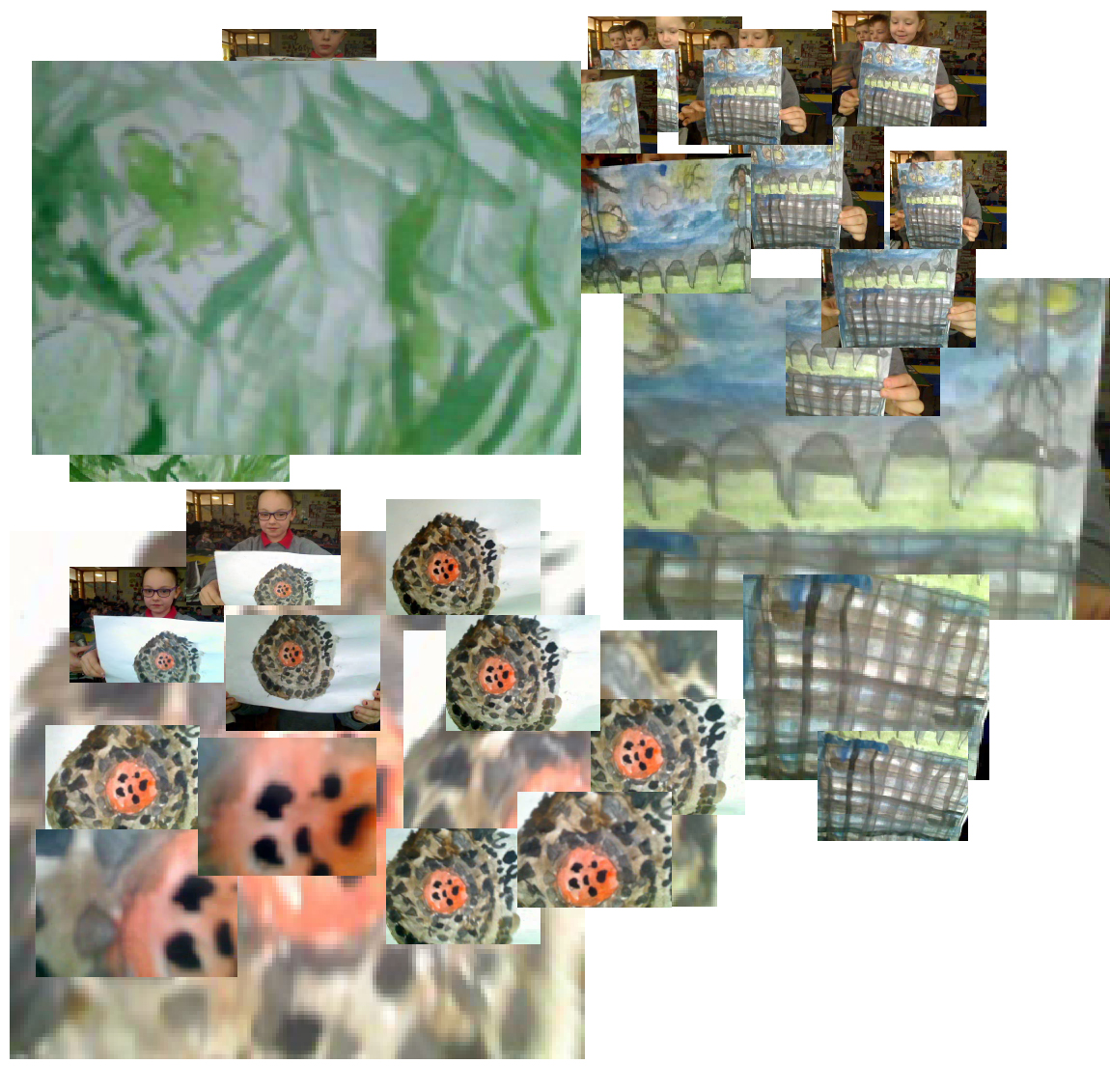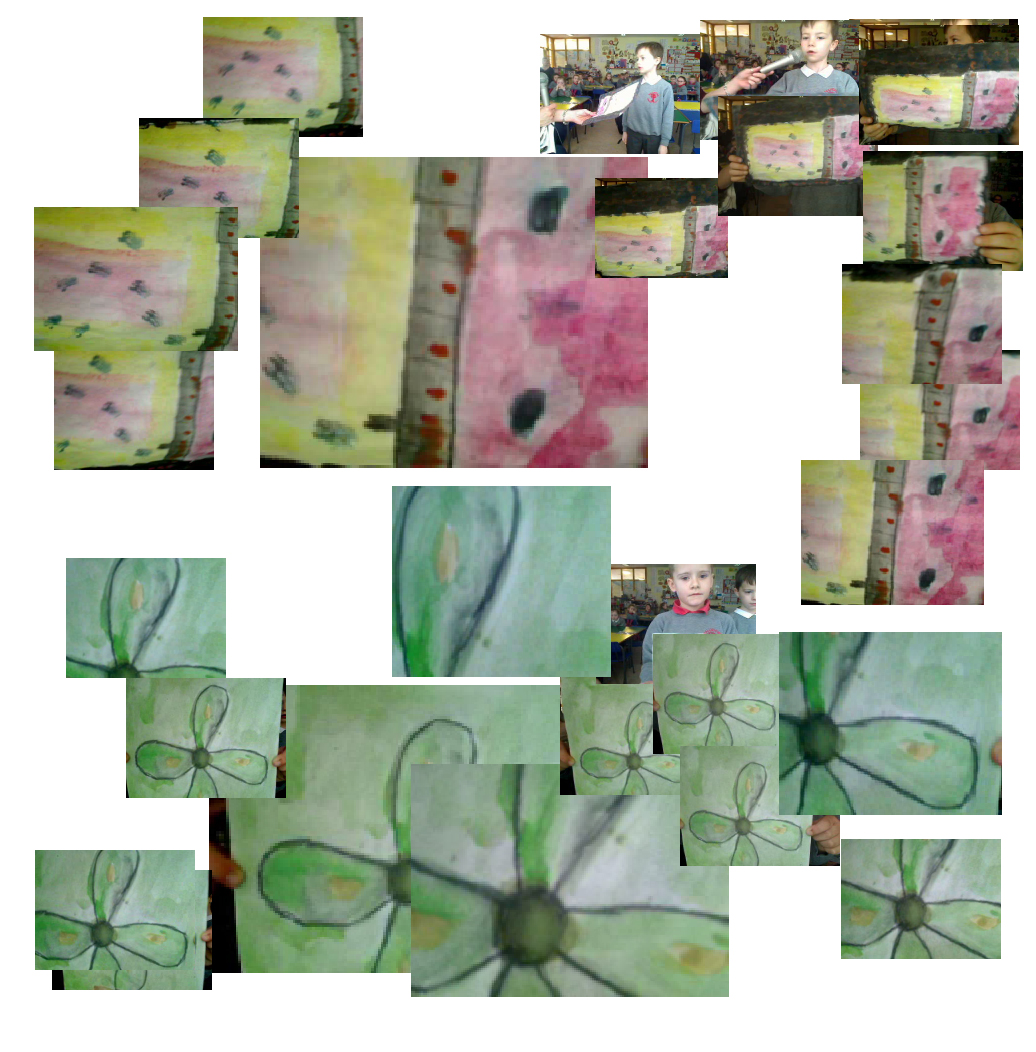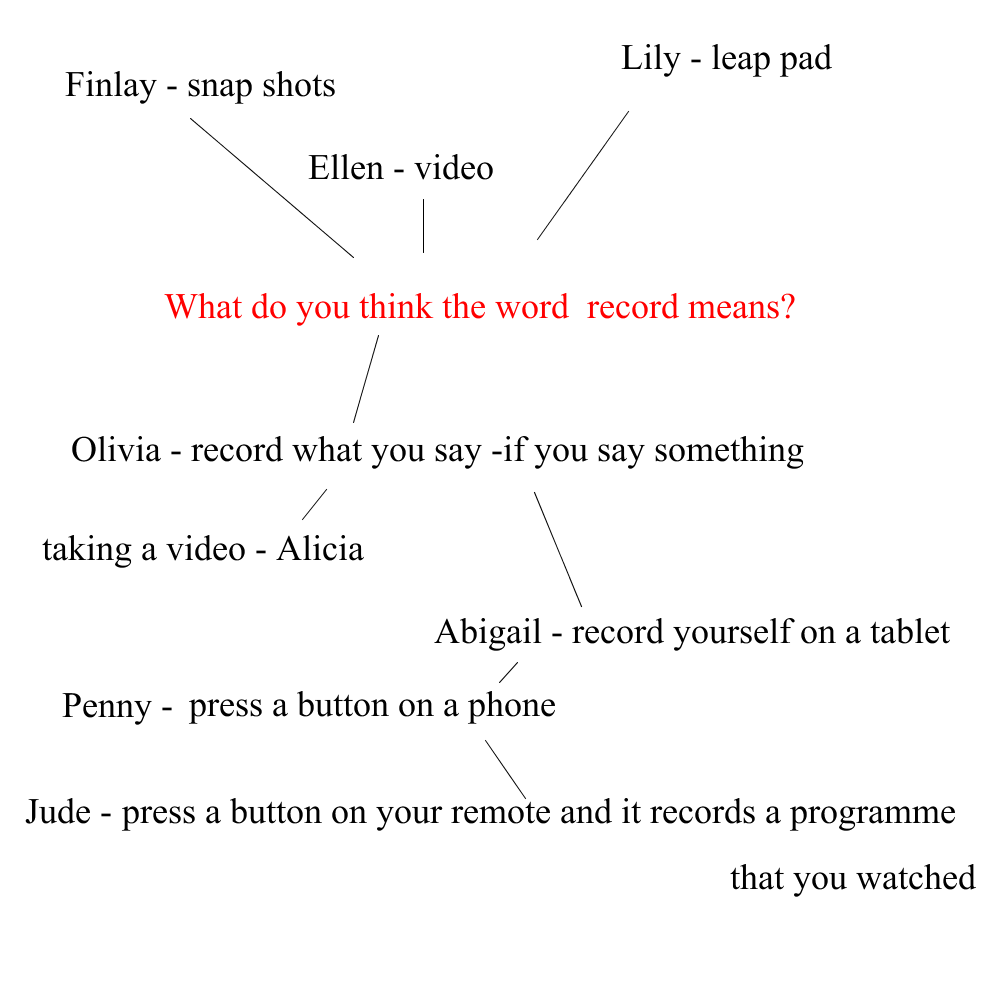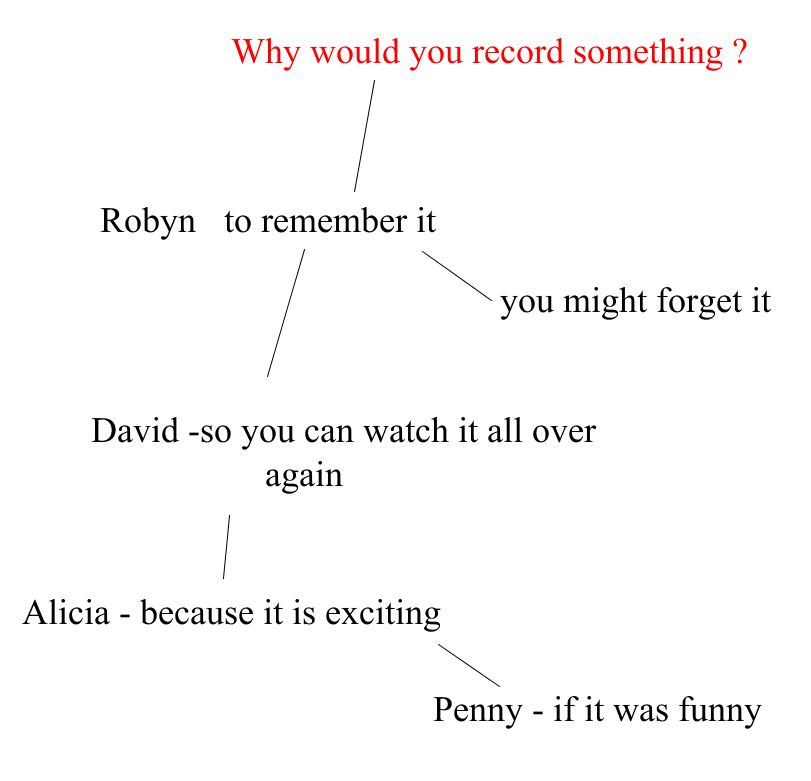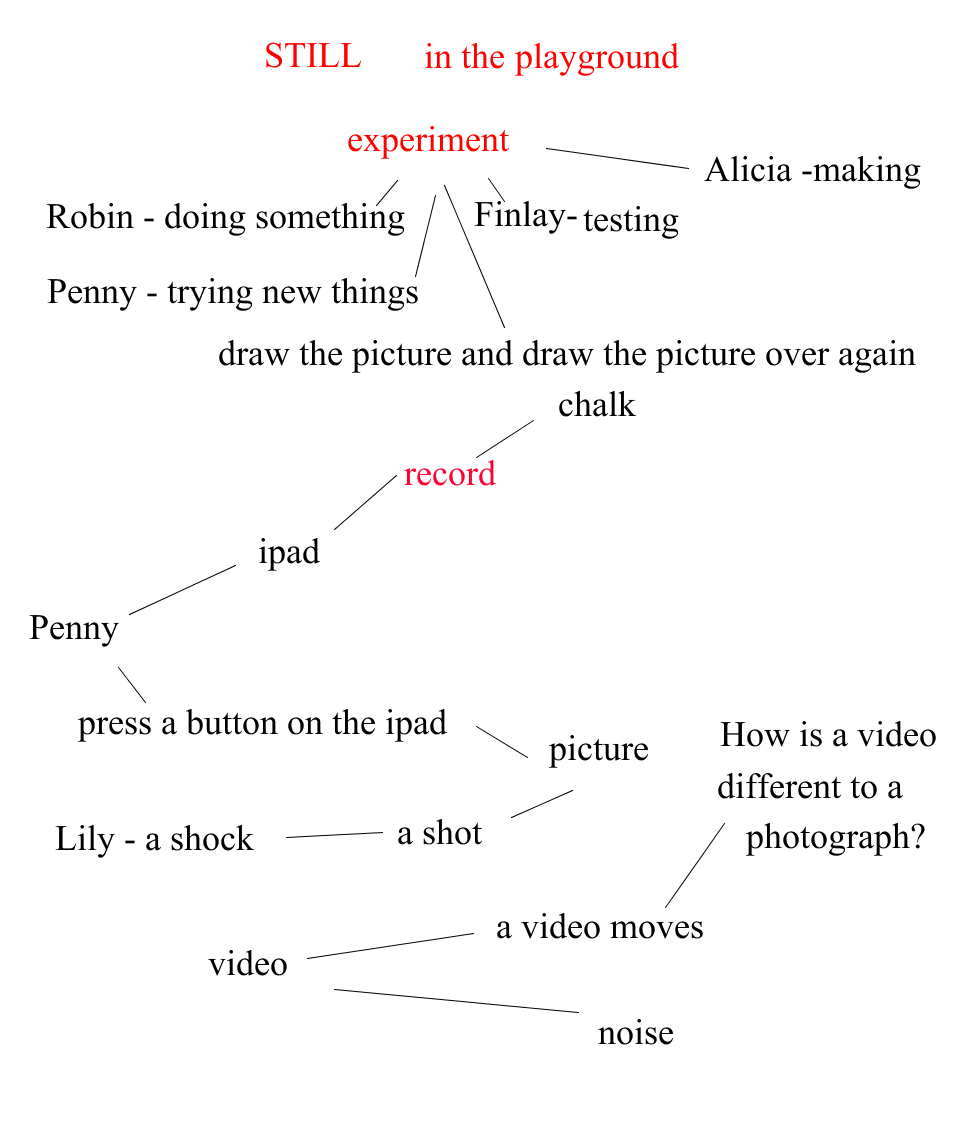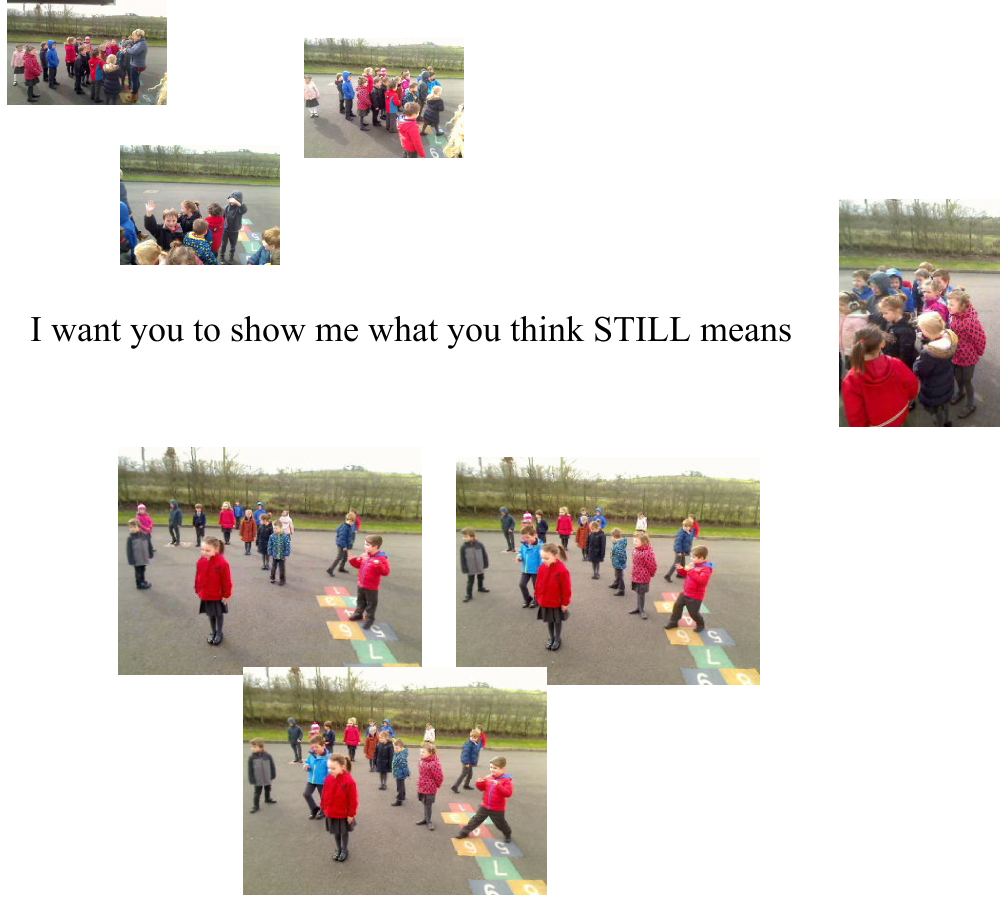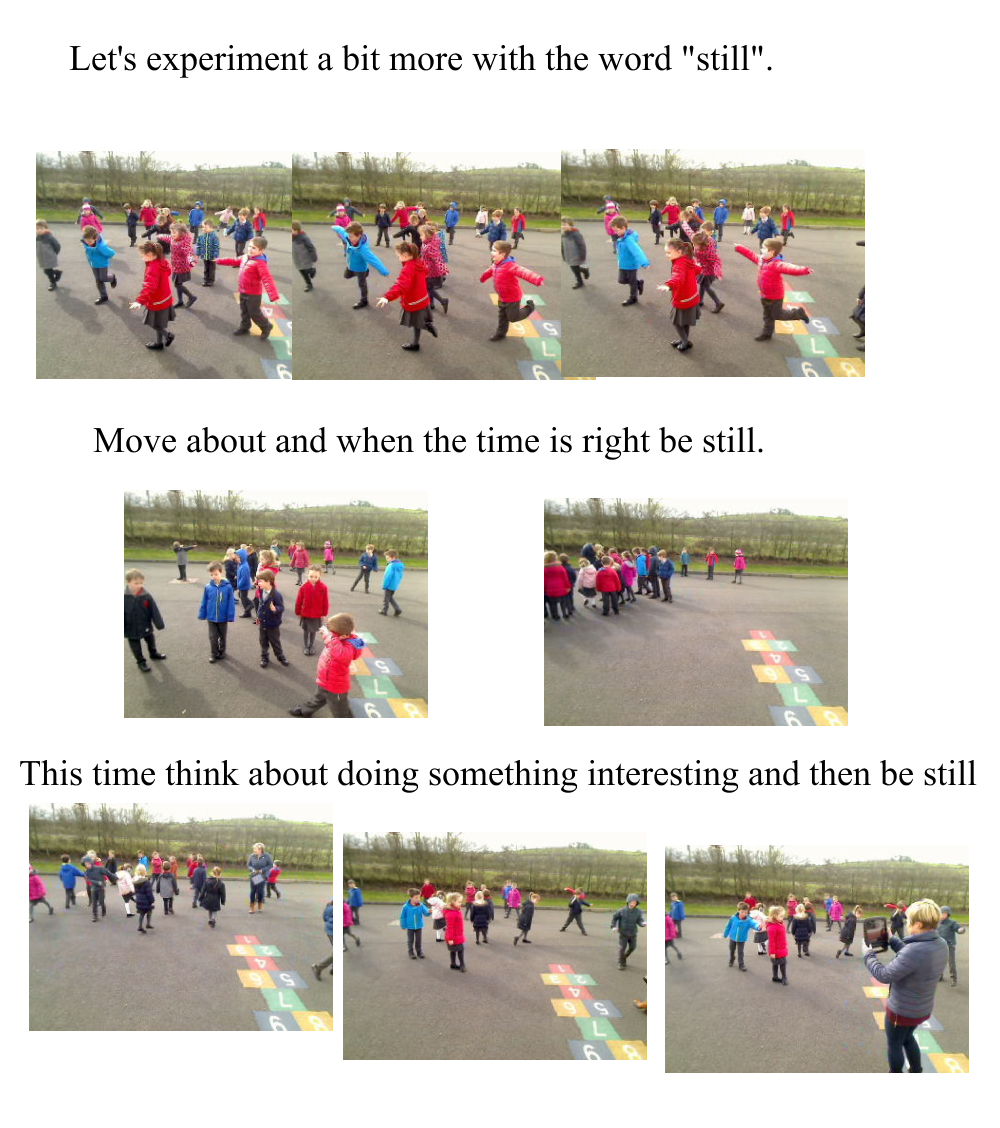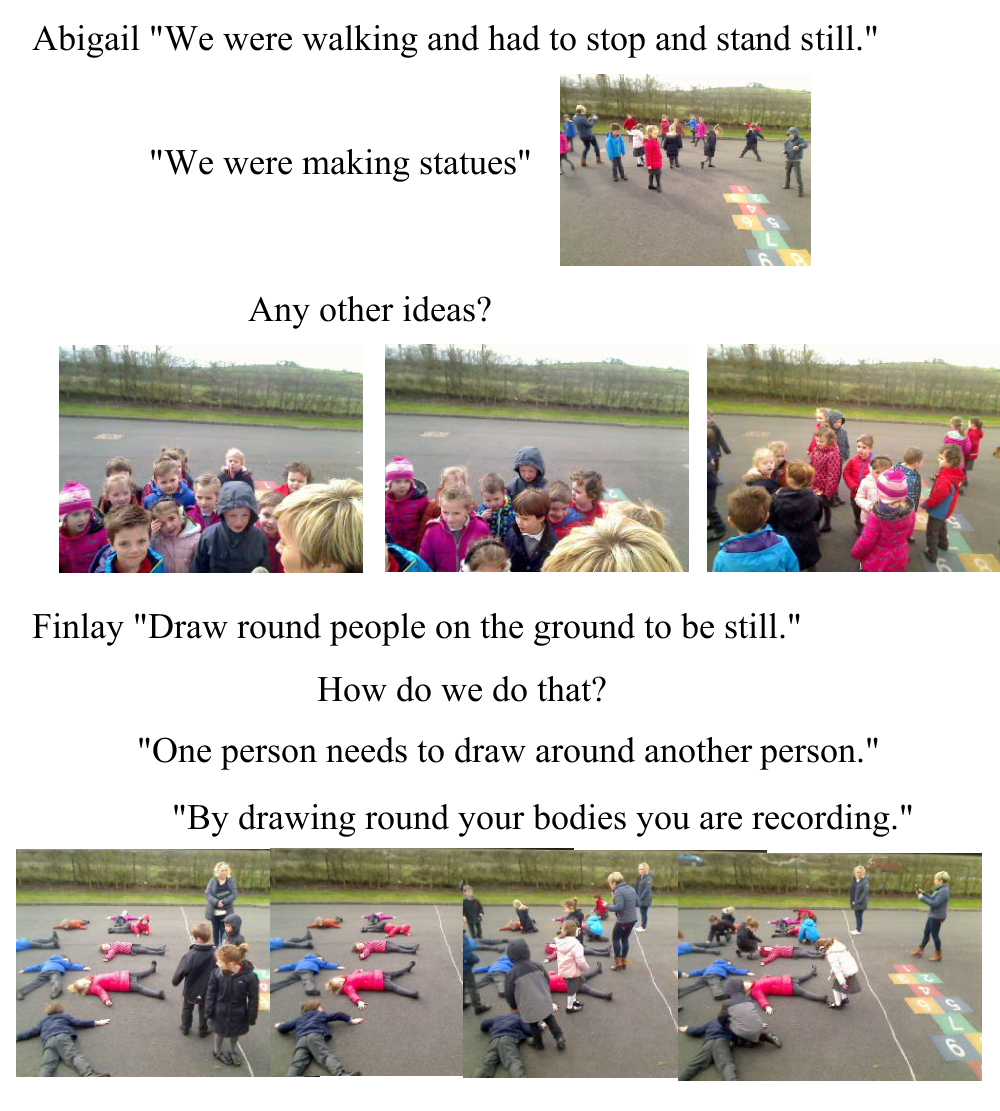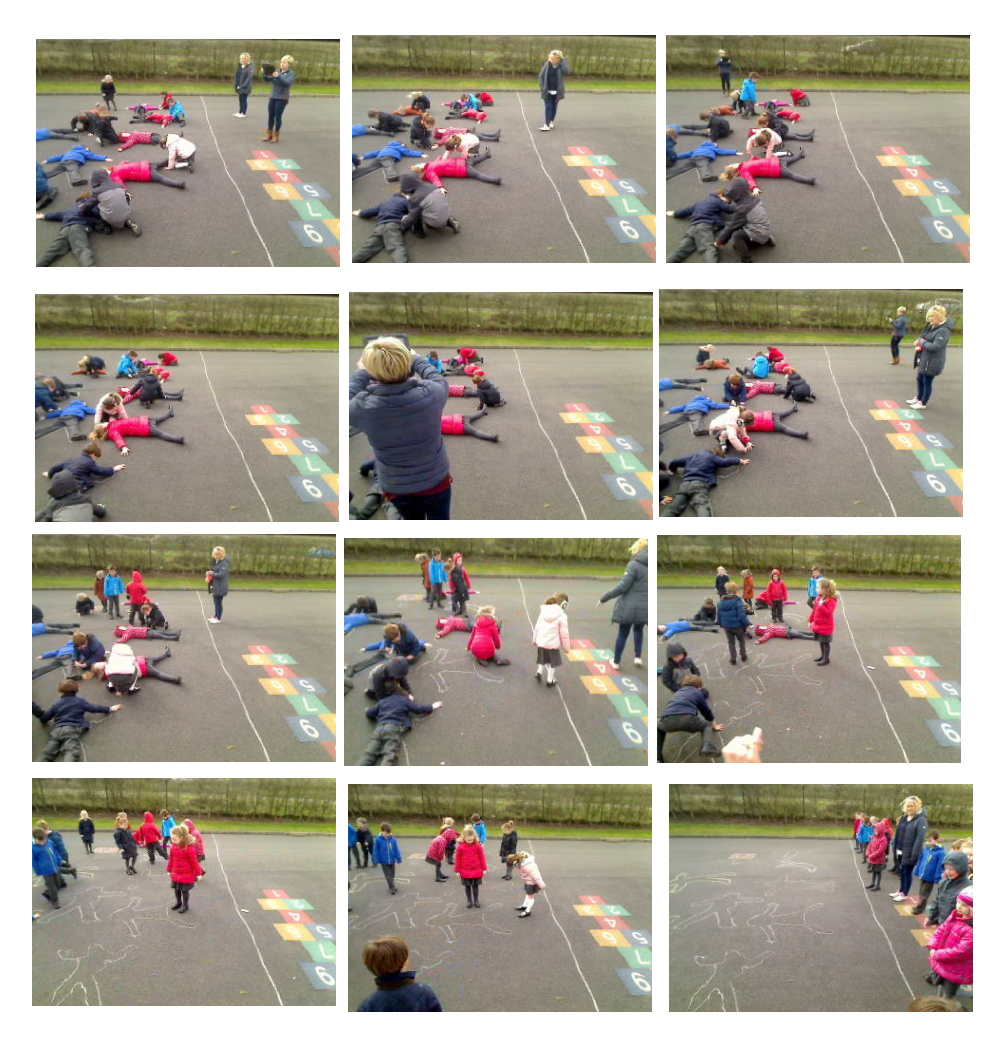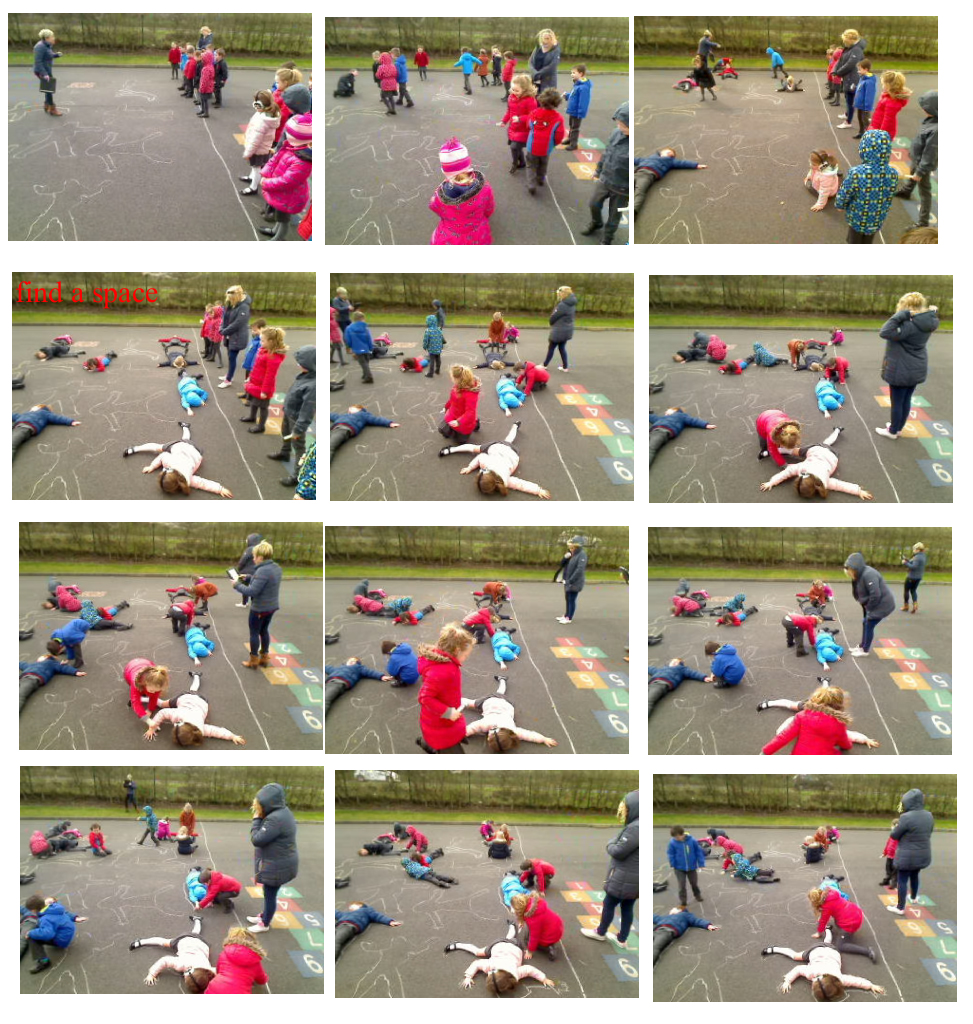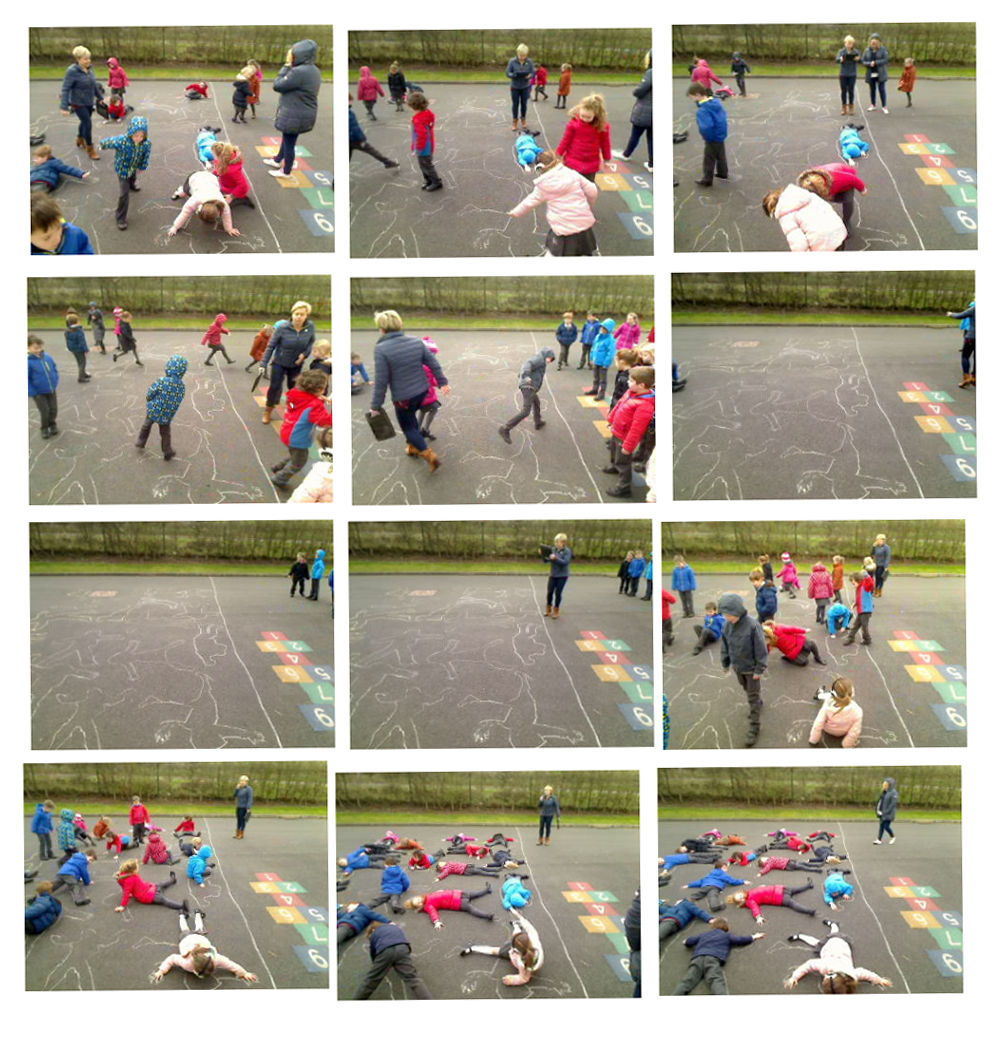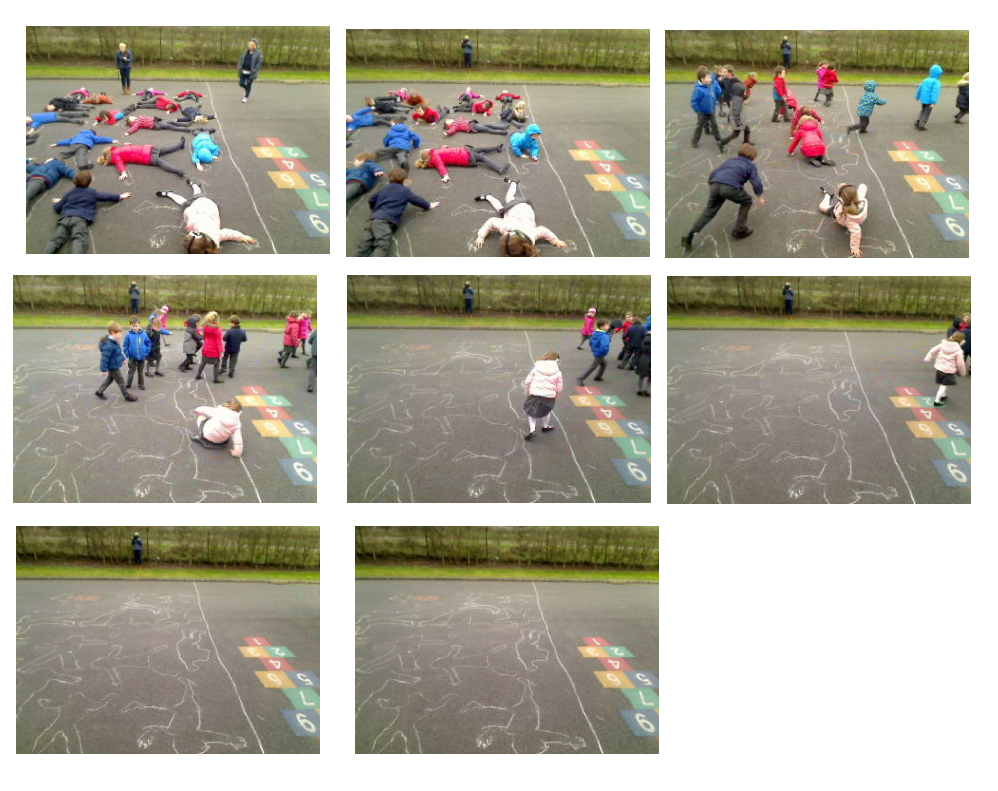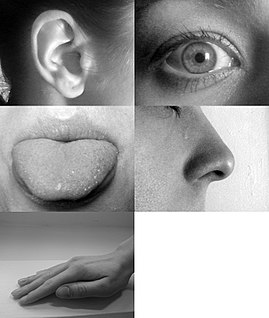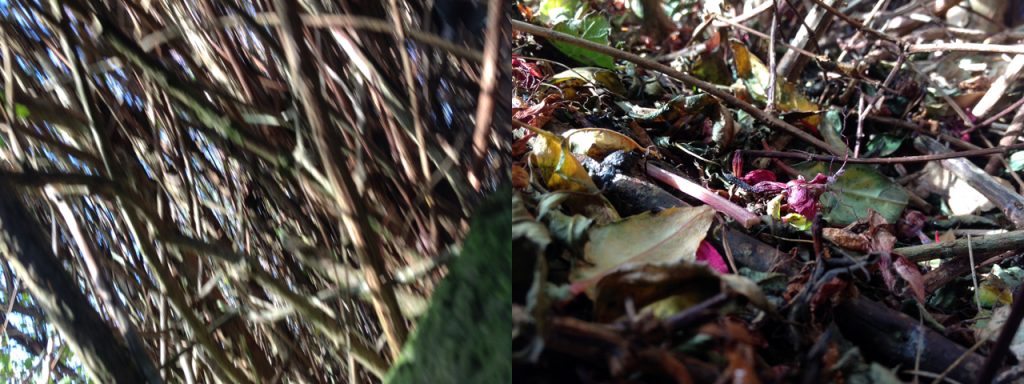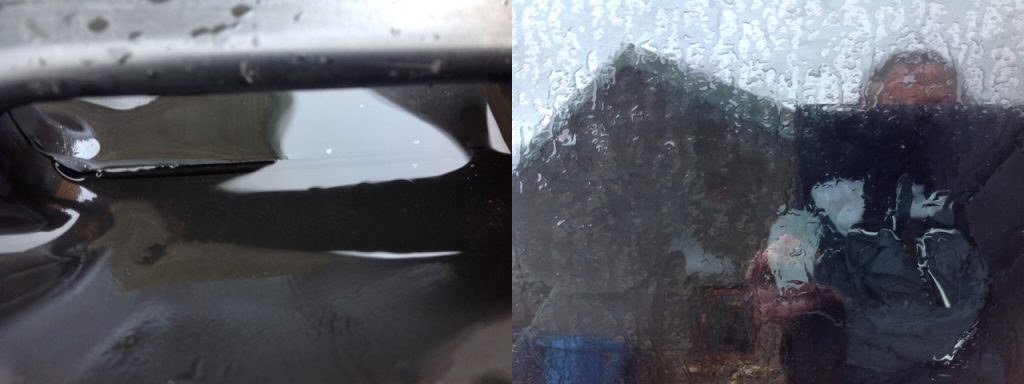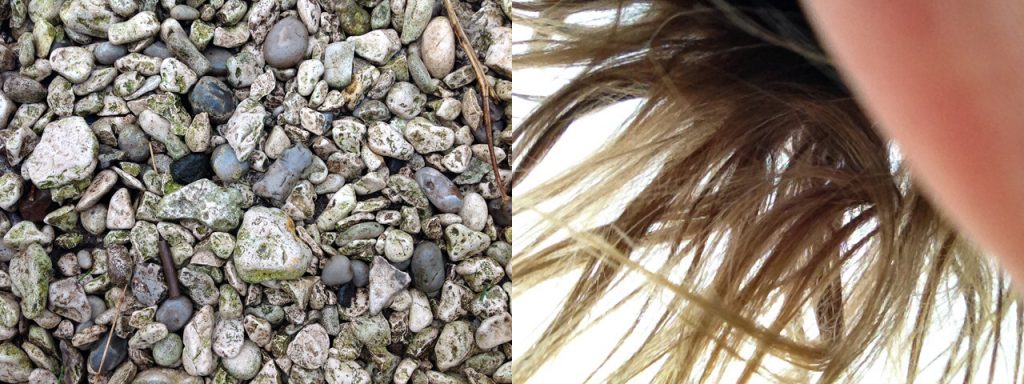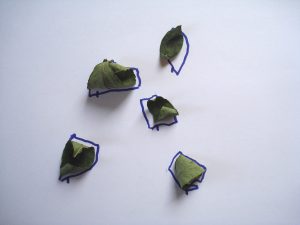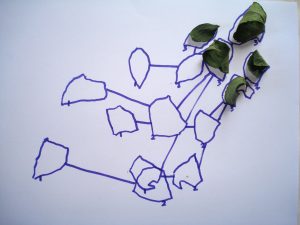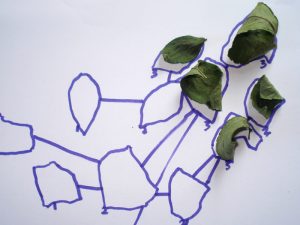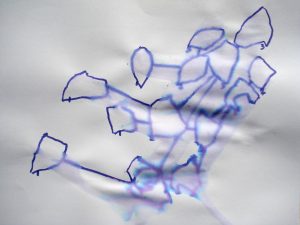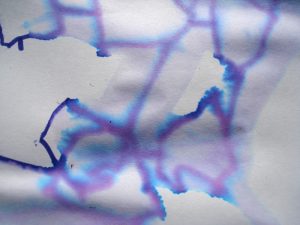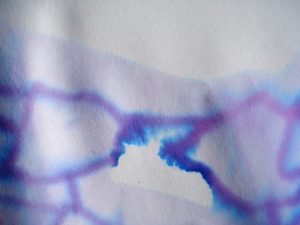Maybe Still is really difficult?
Miss Orr had kept this, my first real visit with P5, a secret and we are again surprised as to how much convincing everyone takes, in spite of our numerous virtual exchanges, to be sure that “it is really me” in the classroom! P5, maybe our “virtual–selves” are quite different to our “real” selves?
We turned our thinking again to Still and Not Still.
We all gathered together at the front of the room to talk. I told P5 that I had been wondering where in the classroom you most associate with Still and of course their own individual seats came to mind.
Back in the studio I had been thinking about how we perceive places around us. This had been initiated by something Miss Orr had said during our discussions about the photos everyone had taken, some weeks back, to represent Still and Not Still. Miss Orr had mentioned being interested in the fact that some of the images taken, were only representative of Still because something was missing – in this case the children who play in the wooden house, on the slide or in the sandpit area. One group had in fact gone out to take their photograph precisely because the younger children were playing there, to represent Not Still, but with the bell just ringing that changed instantly! I found it interesting that the place only assumed this identity because of the absence of something.
This in turn started me thinking about our own states of being within a place and how that affects our perception of it.
So, I asked P5 as they sat around me on the floor to write down what they already knew about being in their own seat. They were to consider their experiences in relation to each of the 5 traditional senses, in the order of seeing, hearing, touching, smelling and tasting. One minute was allotted to make their list for each sense. I had done the same for what I already knew about my primary school seat. We talked about how the sense of taste and smell informs each other and questioned whether you had to physically eat something or put it in your mouth to actually know what it tasted like!
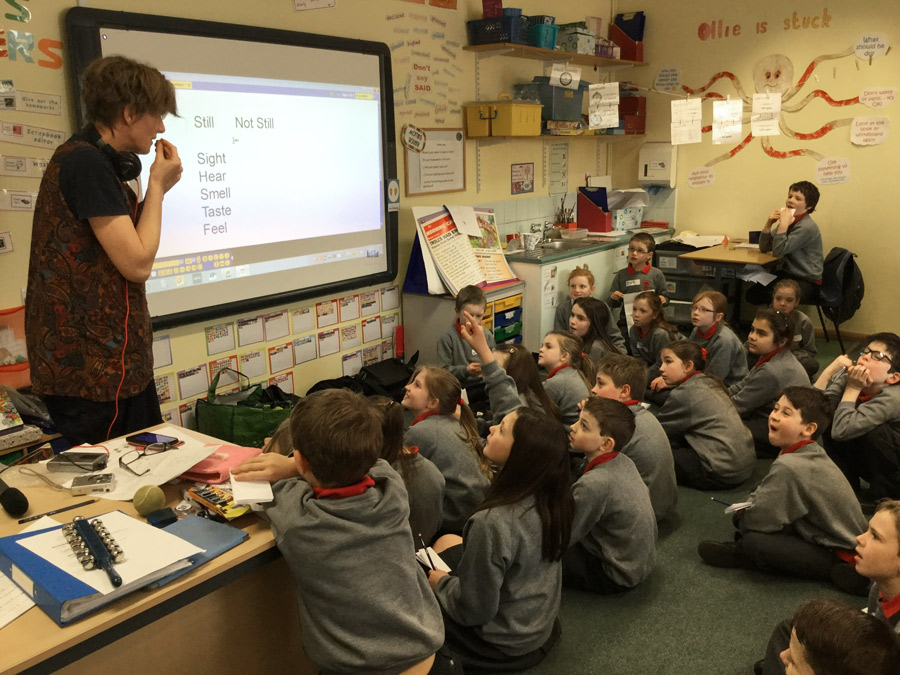
Adam immediately raised a really interesting point, that there are many more senses in addition the five –“You feel time passing and you feel when you get hurt”.
Adam, I was intrigued instantly and have looked up some info (and pasted sections from Wikipedia in the following post) It’s absolutely fascinating and I want to find more but in the meantime I will refer to the senses of sight, hearing, touch, smell, and taste as the 5 traditional senses. Thank you Adam!
Having made our lists about what we already knew, everyone was then asked to go back and sit in their own seat. Everyone was then given a further minute, in relation to each of these 5 senses, to list any additions, according to what they were experiencing at that time.
Again one minute was allocated for each sense. We called this activity seeing+, hearing+, feeling+, smelling+ and tasting+.
For all the above we made written notes and audio recordings and want to pursue our ideas further through the documentation.
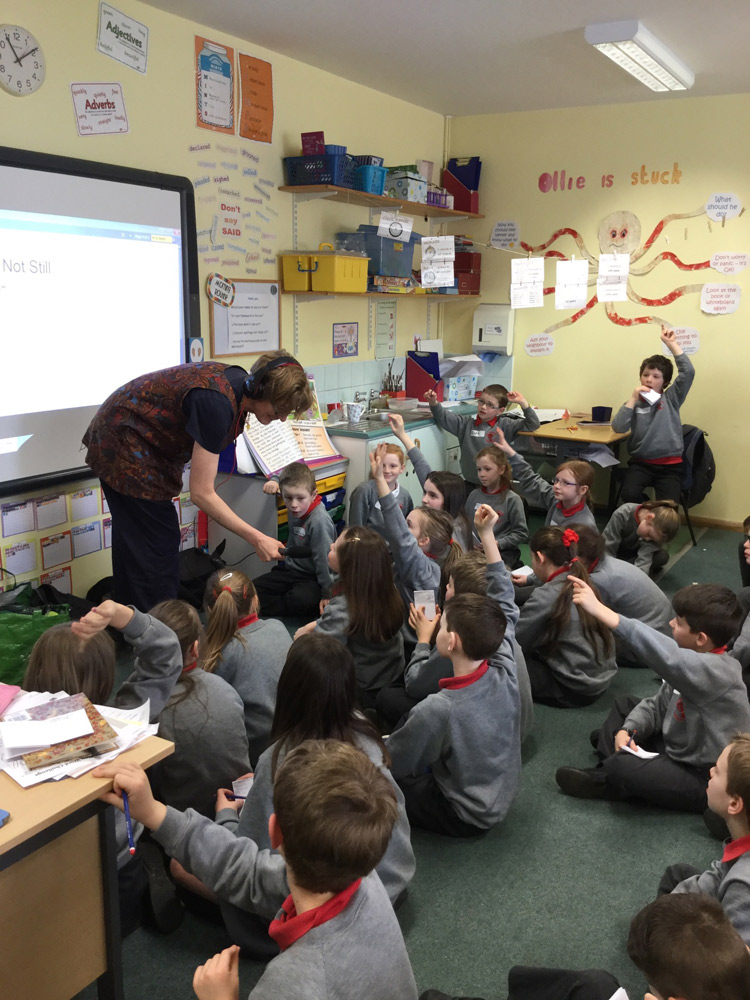
P5 had been asked to identify places within the school building and its grounds, which they felt most strongly represented Not Still and as a result we all went up to the Rath.
Miss Orr used our carefully chosen words on arrival, without any further instruction, asked everyone to “respond to Not Still”. P5 instantly broken into 3 groups careering off into the distance in three separate directions accompanied by lots noise!
After P5 were brought in round Miss Orr again and this time asked to “respond to Still”. Instantly someone asked “What do you mean?”
After lunch we took ipads, notebooks and pencils and the sound recording gear out to the playground to explore the two ideas of Still and Not Still and their documentation.
Not Still repeatedly seemed to be translated involuntarily, whereas Still was continued to seemingly be something quite challenging. When I reconsidered this myself P5 I concluded that “Maybe Still is really quite difficult?”
